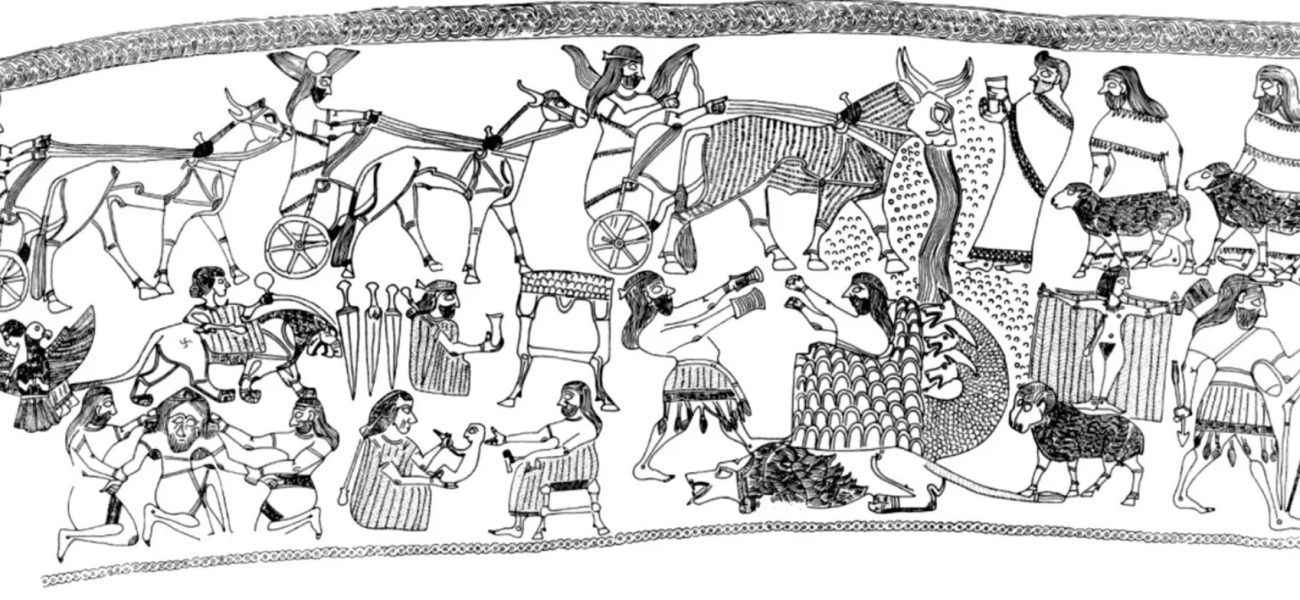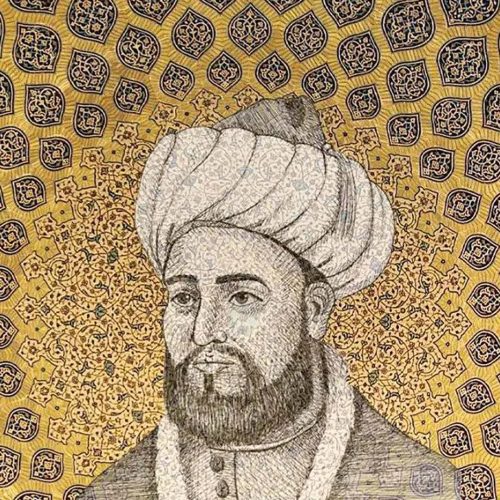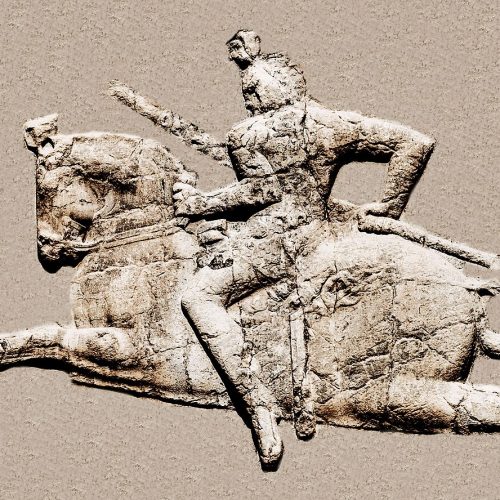The Teispids, a lesser-known branch of the Achaemenid dynasty, emerged as a significant political force in the southern Zagros region during the Iron Age, ruling over the ancient land of Anshan. Descendants of Teispes, the Teispids played a crucial role in shaping the early history of Iran and laying the foundations for the powerful Achaemenid Empire. This article delves into the origins, rise to power, and legacy of the Teispids, shedding light on their contributions to ancient Iranian history.
Origins and Lineage
The Teispids trace their lineage back to Teispes, the progenitor of the dynasty, who lived during the mid-7th century BC. Teispes is believed to have been a local ruler in the southern Zagros region of ancient Iran, where he established his authority over the land of Anshan. While historical records regarding Teispes are scarce, archaeological evidence suggests that he was a prominent figure in the region and played a significant role in the early history of Iranian civilization.
The exact origins of Teispes and the Teispid dynasty are shrouded in myth and legend, with ancient Persian texts attributing divine ancestry to the dynasty’s founders. According to tradition, Teispes was said to be a descendant of the legendary Persian king Jamshid, a mythical figure renowned for his wisdom and benevolent rule. This mythical lineage imbued the Teispids with a sense of legitimacy and divine sanction, reinforcing their authority over the land of Anshan.
As Teispes consolidated his power in Anshan, he likely forged alliances with neighboring chieftains and tribal leaders, as well as established trade networks with surrounding regions. These diplomatic maneuvers and strategic alliances helped Teispes strengthen his position and expand his influence beyond the borders of Anshan, laying the groundwork for the future expansion of the Teispid dynasty.
Teispes was succeeded by his descendants, who continued to rule over Anshan and its surrounding territories. While the early years of the Teispid dynasty remain shrouded in mystery, subsequent rulers such as Cyrus I played a pivotal role in shaping the destiny of the dynasty and laying the foundations for the rise of the Achaemenid Empire.
The origins and lineage of the Teispids are rooted in the ancient history of Iran, with Teispes emerging as a pivotal figure in the southern Zagros region during the mid-7th century BC. Through diplomatic skill, military prowess, and strategic alliances, Teispes and his descendants established the Teispid dynasty and laid the groundwork for the emergence of one of the greatest empires in ancient history: the Achaemenid Empire.
Rise to Power
The Teispid dynasty emerged as a significant political force in the southern Zagros region during a period of regional upheaval and transition. Through a combination of military conquests, strategic alliances, and diplomatic maneuvering, the Teispids rose to prominence and established their authority over the land of Anshan and its surrounding territories.
Consolidation of Power
Teispes, the founder of the Teispid dynasty, likely began his rule as a local chieftain or tribal leader in the southern Zagros region. Through skillful leadership and astute political acumen, Teispes gradually expanded his sphere of influence, consolidating power and asserting his authority over neighboring tribes and territories. This process of consolidation may have involved military campaigns to subdue rival factions and secure strategic strongholds, as well as diplomatic efforts to forge alliances with neighboring rulers and tribal leaders.
Strategic Alliances
One of the key factors contributing to the rise of the Teispid dynasty was the forging of strategic alliances with neighboring kingdoms and tribal confederations. Teispes likely recognized the importance of building alliances to strengthen his position and counter potential threats from rival powers. By forming diplomatic relationships and marital alliances with neighboring rulers, Teispes was able to expand his influence and secure his borders, laying the foundation for the future expansion of the Teispid realm.
Military Campaigns
Military conquests played a crucial role in the expansion of the Teispid domain and the consolidation of Teispes’ power. Teispes and his successors likely led military expeditions to conquer neighboring territories, defeat rival chieftains, and assert their dominance over strategic regions. These military campaigns may have been characterized by a combination of siege warfare, cavalry skirmishes, and infantry engagements, as the Teispids sought to extend their control over key trade routes, agricultural lands, and natural resources.
Territorial Expansion
Over time, the Teispid dynasty expanded its territorial holdings beyond the confines of Anshan, incorporating adjacent regions and tribal territories into its domain. The exact extent of Teispid expansion is difficult to ascertain due to limited historical records, but archaeological evidence suggests that Anshan was a major political and economic center during this period, serving as a hub of trade and commerce between Mesopotamia, the Iranian plateau, and the Persian Gulf.
Cultural and Economic Development
In addition to military conquests and political alliances, the Teispids likely fostered cultural and economic development within their realm, promoting trade, agriculture, and craftsmanship. Anshan, as the capital of the Teispid dynasty, may have been a center of cultural exchange and artistic patronage, attracting artisans, merchants, and scholars from across the region. This cultural flourishing contributed to the prestige and influence of the Teispid rulers, enhancing their reputation as benevolent and enlightened monarchs.
The rise to power of the Teispid dynasty was characterized by a combination of military conquests, strategic alliances, and cultural development. Through skillful leadership, diplomatic maneuvering, and military prowess, the Teispids established themselves as a dominant political force in the southern Zagros region, laying the foundation for the subsequent rise of the Achaemenid Empire and shaping the course of ancient Iranian history.
Legacy and Contributions
Despite the relatively short-lived reign of the Teispid dynasty and its eventual absorption into the Achaemenid Empire, the legacy of the Teispids reverberated throughout ancient Iranian history, leaving a lasting imprint on the political, cultural, and religious landscape of the region.
Political Legacy
The Teispids played a pivotal role in shaping the political development of ancient Iran, laying the groundwork for the emergence of one of the greatest empires in history: the Achaemenid Empire. Through their strategic alliances, military conquests, and diplomatic maneuvering, the Teispids expanded their influence and consolidated their authority over the land of Anshan and its surrounding territories. This period of consolidation and expansion laid the foundation for the subsequent rise of Cyrus the Great and the establishment of the Achaemenid Empire, which would go on to dominate much of the known world.
Cultural Contributions
In addition to their political achievements, the Teispids made significant cultural contributions to ancient Iranian civilization. Anshan, the capital of the Teispid dynasty, likely served as a center of cultural exchange and artistic patronage, attracting scholars, artisans, and craftsmen from across the region. The Teispids patronized the construction of monumental architecture, such as palaces, temples, and fortifications, which served as symbols of their power and prestige. Moreover, the Teispids may have contributed to the development of writing systems, artistic motifs, and religious practices that would later influence the Achaemenid and subsequent Persian empires.
Religious Influence
The Teispids played a role in the religious landscape of ancient Iran, fostering the spread of Zoroastrianism, the dominant faith of the region. Anshan was home to various religious sanctuaries and temples dedicated to local deities, where rituals and ceremonies were conducted to honor the gods and ensure divine favor. While the exact nature of Teispid religious beliefs and practices remains obscure, it is likely that they played a significant role in shaping the religious traditions of ancient Iran and laying the foundation for the later development of Zoroastrianism as the state religion of the Achaemenid Empire.
Dynastic Continuity
Although the Teispid dynasty was eventually eclipsed by the rise of the Achaemenids, their lineage continued to exert influence within the Persian royal family. Cyrus the Great, the founder of the Achaemenid Empire, traced his ancestry back to Teispes through his maternal lineage, thereby establishing a symbolic connection to the Teispid legacy. This dynastic continuity served to legitimize the rule of the Achaemenid monarchs and reinforce their claim to the throne of Persia, perpetuating the memory of the Teispid dynasty for generations to come.
The Teispids left a profound legacy that shaped the course of ancient Iranian history. Through their political achievements, cultural contributions, and religious influence, the Teispids laid the foundation for the emergence of the Achaemenid Empire and the subsequent flourishing of Persian civilization. While their reign may have been relatively brief, the impact of the Teispid dynasty reverberated throughout the annals of history, leaving an indelible mark on the cultural heritage and collective memory of the Iranian people.
Decline and End of the Dynasty
The Teispid dynasty, which had once ruled over the land of Anshan and its surrounding territories with authority and prestige, eventually faced challenges that led to its decline and eventual demise.
External Threats
As the Teispids expanded their territory and influence, they inevitably came into contact with neighboring powers and rival kingdoms. This exposure to external threats, including the incursions of nomadic tribes and the ambitions of regional competitors, posed significant challenges to the stability and security of the Teispid realm. Military conflicts, border skirmishes, and diplomatic tensions strained the resources and resilience of the Teispid dynasty, weakening its grip on power and sowing the seeds of its eventual downfall.
Internal Dissent
In addition to external threats, the Teispid dynasty also faced internal challenges from rival factions, disaffected nobles, and ambitious courtiers vying for power and influence. Intrigues, conspiracies, and power struggles within the royal court undermined the cohesion and unity of the Teispid government, leading to internal discord and instability. Factionalism and court rivalries weakened the authority of the Teispid rulers and eroded public confidence in their ability to govern effectively, hastening the decline of the dynasty.
Succession Crisis
The issue of succession, always a contentious issue in monarchies, proved to be a significant factor in the decline of the Teispid dynasty. With no established rules or norms governing the transfer of power, succession disputes often erupted upon the death of a Teispid ruler, leading to dynastic rivalries and civil strife. Succession crises weakened the authority of the central government, paralyzed decision-making processes, and provided opportunities for external adversaries to exploit the instability for their own gain.
Annexation by the Achaemenids
The decline of the Teispid dynasty ultimately culminated in its annexation by the rising power of the Achaemenid Empire, led by Cyrus the Great. Cyrus, a descendant of the Teispids through his maternal lineage, capitalized on the internal weaknesses and external threats facing the Teispid realm to launch a campaign of conquest and expansion. By leveraging superior military tactics, diplomatic alliances, and political maneuvering, Cyrus was able to subdue the Teispid rulers and incorporate their territories into the burgeoning Achaemenid Empire.
Legacy and Influence
Despite its relatively short-lived reign and eventual eclipse by the Achaemenids, the Teispid dynasty left a lasting legacy that shaped the course of ancient Iranian history. The Teispids laid the foundation for the emergence of one of the greatest empires in history, serving as a bridge between the ancient civilizations of Mesopotamia and the Persian Empire. Their contributions to politics, culture, and religion laid the groundwork for the subsequent flourishing of Persian civilization under the Achaemenids and beyond, ensuring that the memory of the Teispid dynasty would endure for generations to come.
The decline and end of the Teispid dynasty were marked by external threats, internal dissent, succession crises, and ultimately annexation by the Achaemenid Empire. Despite its demise, the Teispid dynasty left an indelible mark on the history and culture of ancient Iran, shaping the destiny of the region and laying the foundations for the rise of one of the most influential empires in antiquity.
The Teispids, descendants of Teispes, were a significant Iron Age dynasty that ruled over the ancient land of Anshan in the southern Zagros region. Despite their relatively short-lived reign and eventual eclipse by the Achaemenids, the Teispids played a crucial role in laying the foundations for the emergence of the Persian Empire and shaping the course of Iranian history. Their legacy serves as a reminder of the enduring influence of regional dynasties in the complex tapestry of ancient Iranian civilization.




